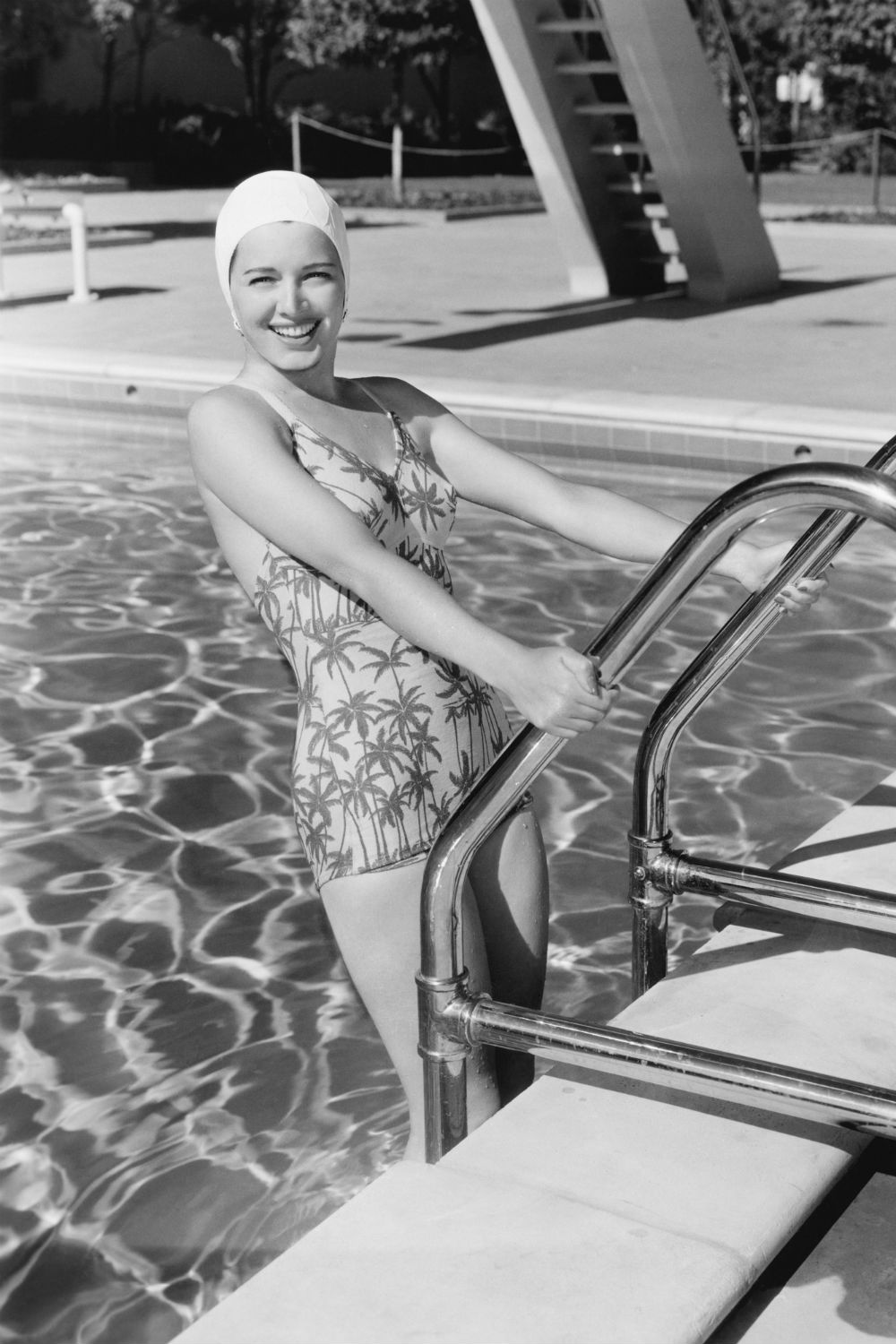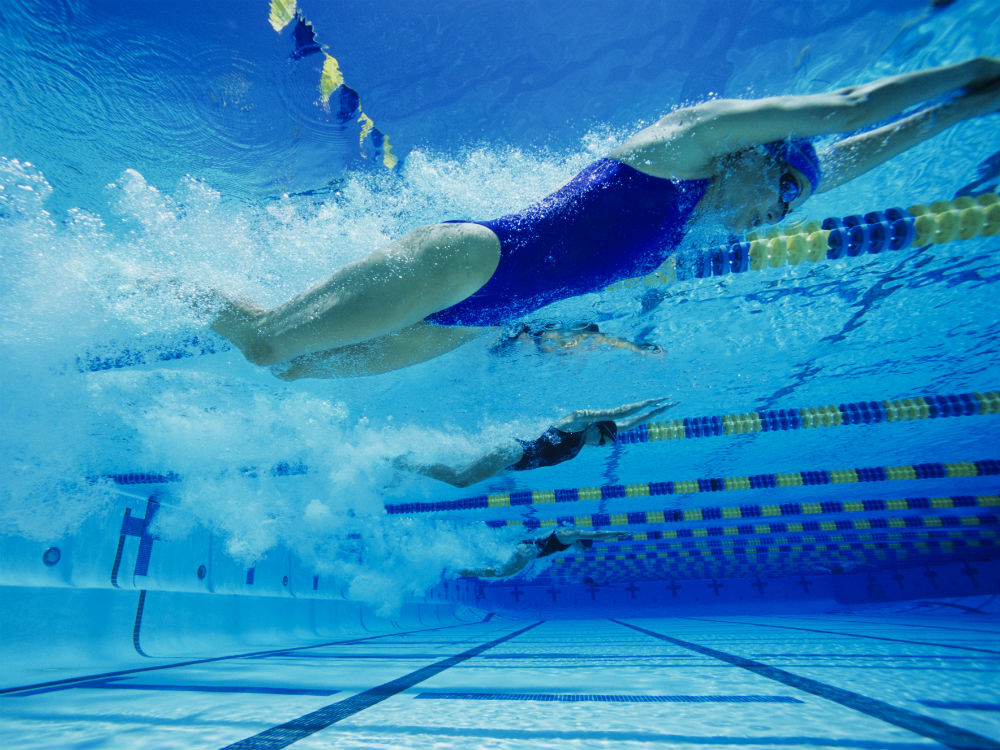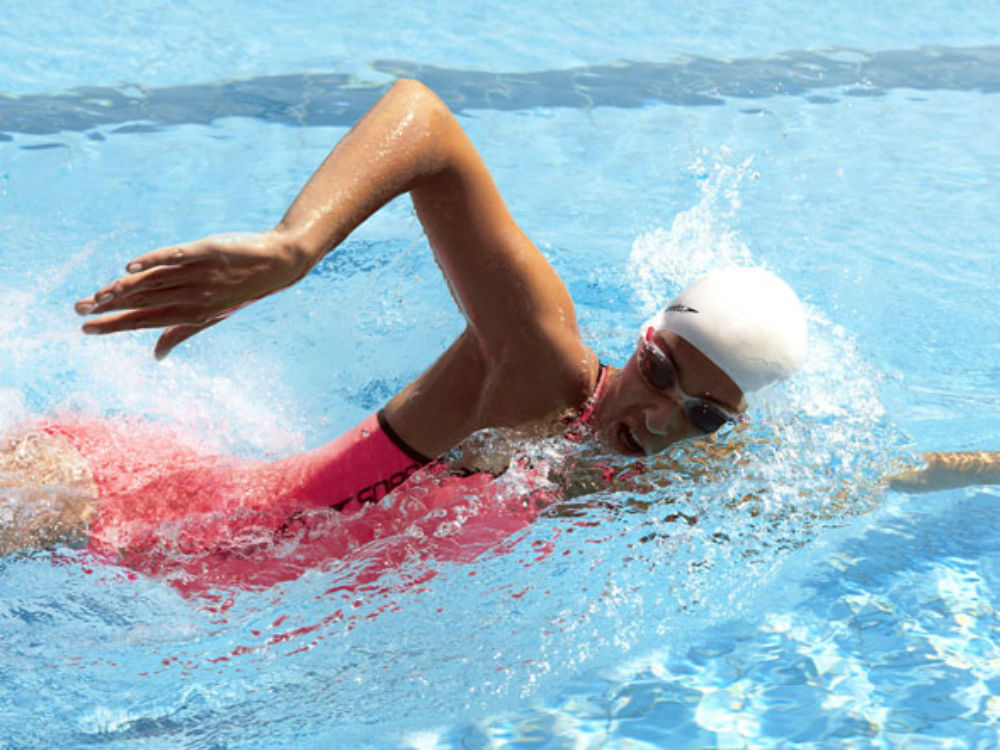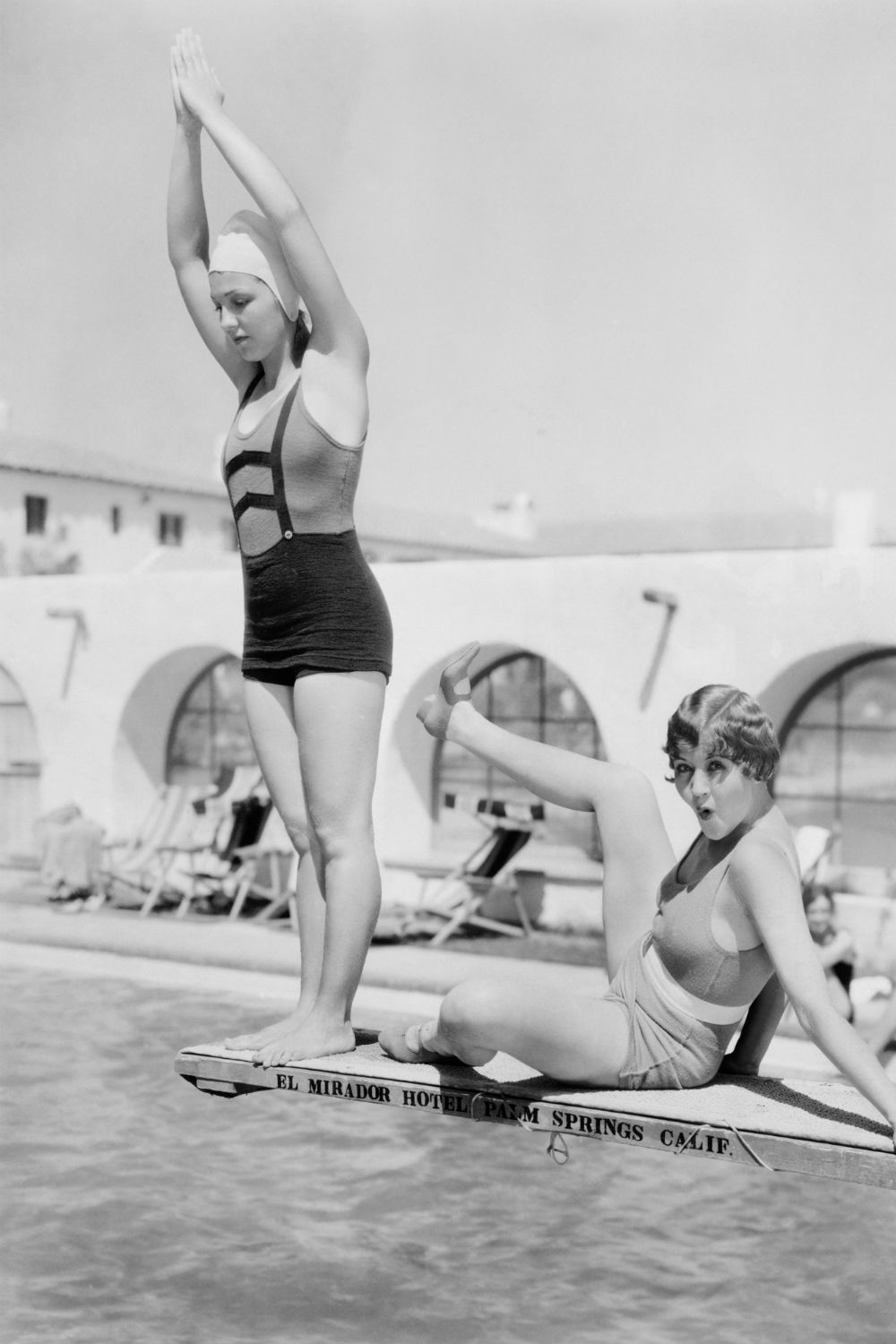How To Be A Better Swimmer (We've Taken The Lessons So You Don't Have To)
Whether you're training for the Swimathon 2015 (17-19 April) or just trying to get in shape for summer, we've taken lessons in all the strokes to show you how it's done. Warning: you may never bother with the gym again.

Whether you're training for the Swimathon 2015 (17-19 April) or just trying to get in shape for summer, we've taken lessons in all the strokes to show you how it's done. Warning: you may never bother with the gym again.
I am not what you'd call a 'natural' swimmer. I've lost count of the number of lessons I took as a child before I officially learnt. And even then, I'm not sure waving my arms in the air and kicking like a impatient six-year-old on a train in order to get from one end of the pool to the other constituted doggy paddle - let alone anything else. My hair hardly touched the water (the sure sign of a faux swimmer), my costume lacked the badges to mark milestone distances (remember those?), and (unsurprisingly) I grew into an adult who definitely preferred drinking like a fish to swimming like one.
Cut to 2015. Next week in fact. And I am swimming 5K in the Swimathon for Marie Curie Cancer Care. I started swimming (albeit still rather badly!) a few years ago for relaxation mainly, but the more I did it, the more I enjoyed it and I came to rely on it for everything from winding down after a stressful day to aiding a hangover (see above!).
Raising money for a cause close to my heart is a massive incentive to not only go the distance, but hone my technique at the same time. I opted for one-to-one swimming lessons through Everyone Active and can't recommend them enough to cover everything from the absolute basics (don't forget to breathe!) to tackling strokes I never had the confidence to before (months ago I couldn't even swim underwater. Really).

What you need to know about Breaststroke...
I've always stuck to Breaststroke - like many people - because it came most naturally, but I'm amazed (who am I kidding, I'm not actually that surprised) to learn I've been doing it wrong my whole life. From the angle of my hands to the power of my kick, the tweaks I've made to my own, erm, version, have transformed my swimming experience. It's harder, but much more satisfying. In fact, swimming Breaststroke for 30 minutes will burn around 360 calories, which is around the same as running 7 mph for the same time period. Wowzas.
Here's how to do it properly:
Marie Claire Newsletter
Celebrity news, beauty, fashion advice, and fascinating features, delivered straight to your inbox!
1. Your head should be in line with the centre of your body. You should keep your entire body as horizontal as possible, with a slight slope to allow your legs to be below the surface of the water during the kick.
2. Remember to look down while you glide and keep your face in the water.
3. The most important part of Breaststroke is the kick as this is where the majority of the propulsion comes from. Your knees should be just over hip width apart; your feet turned out as they move out and back in a frog kick motion. Your legs should finish together for the glide. Focus on bringing your feet back towards your bum as you reset the kick, rather than knees to chest. 4. During the glide, your hands should be together, with your palms facing downward and slightly out. Keep your elbows high as you bring your hands out and round in a semicircle motion. Your hands should then swim back in to the body as if they are coming to meet at your upper chest.
5. Try not to sweep your arms too wide as this will slow you down, remember the legs provide most of the propulsion. You can then restart the arm action by pushing your hands out forwards again.

What you need to know about Front Crawl...
I've always been afraid of the great, big, bad, crawl. Mainly because I lack coordination but also because I've been splashed on so many times by massive grunting 6'2 blokes swimming too fast in the medium lane (huge swimming bugbear). Anyway, turns out it's pretty fun. And best of all I am going to feel positively smug when I next get splashed, now I know that in order to swim Front Crawl correctly, you don't actually need to splash at all. Your feet just make a little volcano (that never properly erupts). Are you listening, boys?
I just need to work on my speed - a slow Front Crawl for 30 minutes will burn 257 Calories, whereas a fast sprint Front Crawl can burn around 404 calories. That’s the equivalent of running for 30 minutes at 8mph!
Here's how to do it properly:
1. Try and keep your body as flat as you can so you remain streamlined in the water. Your stomach should be flat and level in order to support your lower back. Rotate your hips and shoulders to generate momentum in the water, your head should ideally only join the rotation when you want to breathe.
2. Your head turn should be smooth when you breathe. Keep your head in line with your neck and spine, joining in with the rotation of your shoulders. You should breathe out with your face in the water when your head has returned to a neutral position.
3. Your arm should be slightly bent at the elbow when you reach your hand in front of your body. Give yourself room to reach forward under the water before you start to bring your hand backward.
4. Legs should be as straight as possible, close together, with your ankles relaxed. Your legs should move in a continuous motion. Remember the straighter your legs, the more efficient and powerful your kick will be.

What you need to know about Backstroke...
I started out on this swimming challenge feeling safer sticking to Breast Stroke but mixing it up (especially when attempting a 5K - I must be mad!) is essential, not to mention a whole lot more interesting. Swimming Backstroke for 30 minutes will burn around 250 Calories, that’s more than cycling 14 mph for the same time period.
Here's how to do it properly:
1. As with front crawl, try to keep your body as flat as possible in the water. You should slope slightly downwards to the hip to make sure your feet stay under the water, but don’t let your hips drop too low as this will slow you down. Your head should be still and your neck relaxed, generate momentum by rotating your shoulders and hips.
2. You lift one arm out of the water as the other starts the propulsive phase underneath the surface. Your little finger should enter the water first, with your arm straight and your palm facing outwards. Your arm should almost touch your ear before it enters the water between the shoulder line and the centre line of your head.
3. Kick from the hip with your leg close together. Keep your ankles relaxed and your knee slightly bent as you push downward. Kick as fast or slow as you are comfortable doing, a sprint swimmer will typically manage six beats for each arm cycle.
4. You shouldn’t hold your breath at all during the stroke; a breath is usually taken every time your arm completes a cycle. Try breathing in as your arm passes one ear and out as the other arm passes.